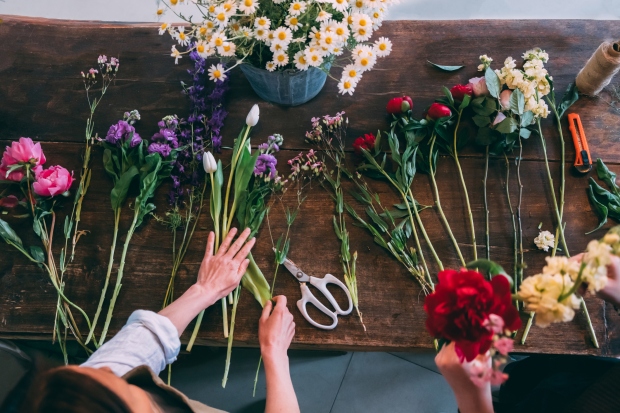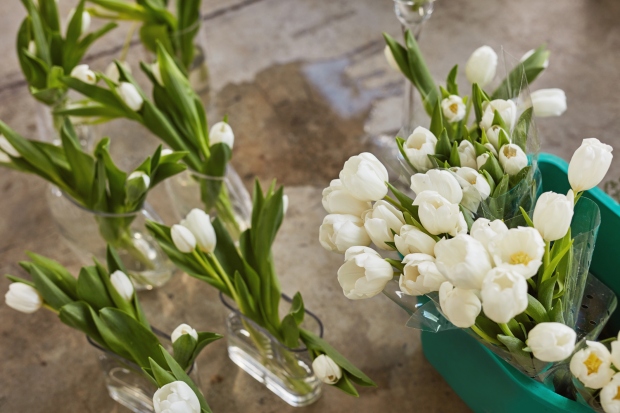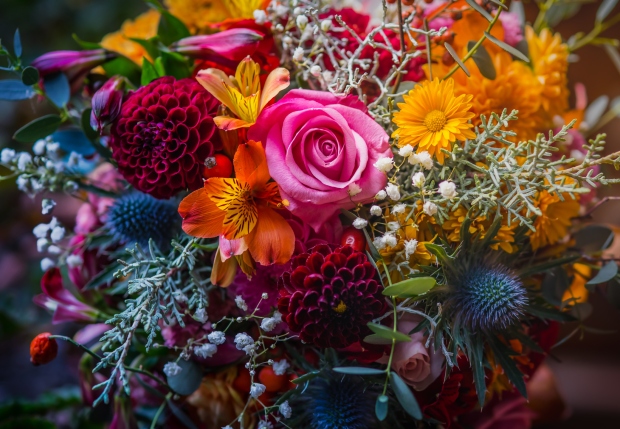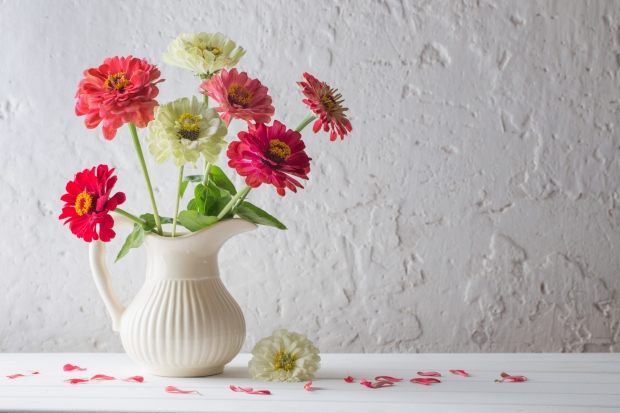How to Store and Preserve Cut Flowers
The fun begins once you’ve harvested your cut flowers. Now, it’s time to prepare them for display.
The first step is getting them out of the field safely. Keep fresh-cut flowers out of direct sunlight and move them to a cool space as soon as possible after harvesting. This is especially important if you plan to sell them within a day or further in the future.
But don’t despair if you see signs of wilting right away — most varieties will perk back up as soon as they are placed in water.

Many cut flowers will benefit from a time of rest after harvesting before they are put in their final arrangements. This stage is called conditioning and should last a few hours at minimum (although overnight is often better). It’s the reason why most event flowers are cut a day or two beforehand. Keep them in a cool, preferably dark place during this time to maximize freshness.
Make sure you have cleaned and sterilized vases ready for the freshly cut stems. Warm, soapy water should do the trick. Store each stem vertically in cool, clean water. Avoid using warm water, as it encourages bacterial growth.

It’s a good idea to add a packet of flower food if you plan to leave the flowers there for a while before working on the final arrangement. In a pinch, some sugar dissolved in the water will also work.
Keep the flowers in a cool spot out of direct sunlight that could heat the water. A walk-in cooler or fridge set to a higher-than-average temperature can work well for short-term storage.
Ensure you keep the flowers away from ripening fruit, as the ethylene gas the fruit lets off triggers faster maturing and will cause them to wilt more quickly.

Add more water to your flower container daily and replace it when it starts to look cloudy. This offers an excellent opportunity to re-cut the flower stems to remove the bacterial plug that builds up on the end and boost water absorption into the plant. Keep the leaves from touching the water, as this will lead to rot.
You can rehydrate wilted flowers by placing them in water that’s made slightly acidic with citric acid or aluminum sulfate. Keep them in a colder room until you see them perk up. Avoid using hard water, as it shortens the flowers’ lifespan and even harms the vase.
Some flowers, such as yarrow, zinnia, and rudbeckia, are notorious for dirtying their water fast. You’ll need to change it out more frequently and might want to add small amounts of chlorine to limit bacterial growth.
